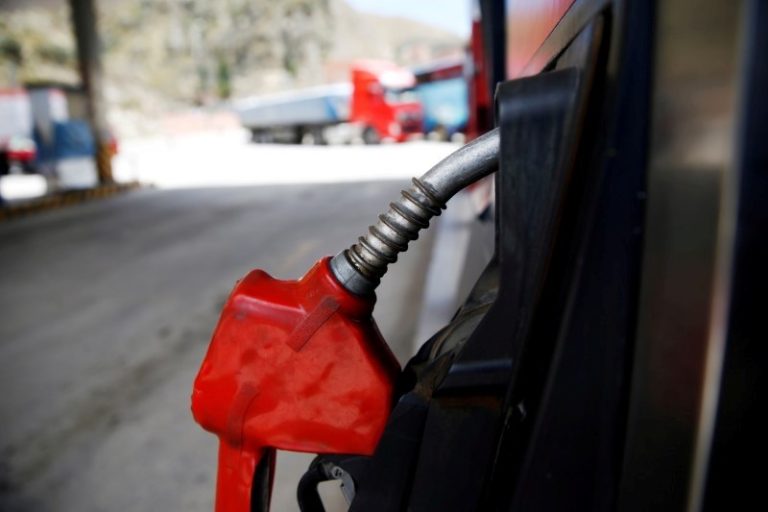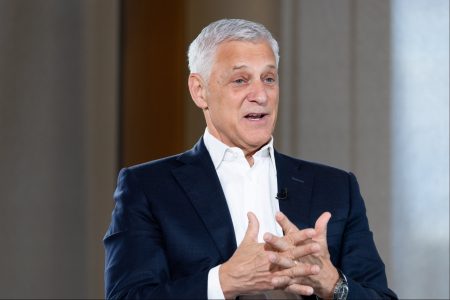KLX Energy Services Holdings, Inc. (NASDAQ: NASDAQ:) discussed its robust third-quarter performance in an earnings call on November 1, 2024, despite facing a challenging market environment. The company reported $189 million in revenue and $28 million in adjusted EBITDA, which translated to a 15% adjusted EBITDA margin, outperforming their previous guidance. This success comes even as the U.S. land rigs and active track spreads saw declines. KLX also highlighted its strategic positioning and optimistic outlook for the upcoming years, with a focus on operational efficiency and growth in LNG exports and demand.
Key Takeaways
- KLX Energy Services reported strong Q3 earnings with $189 million in revenue and $28 million in adjusted EBITDA.
- The company saw a 15% adjusted EBITDA margin, surpassing expectations.
- Geographical revenue distribution was balanced, with the Southwest and Rockies each contributing 36%, and the Northeast Mid-Con at 28%.
- Completion-focused activities rose to 54% of Q3 revenue.
- Despite a 3% decline in U.S. land rigs and a 7% drop in active track spreads, revenue per operated rig was high.
- KLX ended the quarter with substantial cash and liquidity and is exploring refinancing options.
- A projected Q4 revenue decline of 10% to 14% is expected due to seasonal factors, with adjusted EBITDA margins between 9% and 13%.
- Management remains optimistic for 2025, with anticipated revenue growth of 5% to 10% due to LNG export and data center demand increases.
Company Outlook
- KLX anticipates a 10% to 14% sequential revenue decline in Q4 2023, largely due to seasonal factors.
- For 2025, KLX expects a revenue increase of 5% to 10%, driven by growth in LNG exports and natural gas demand from data centers.
- The company plans to normalize capital expenditures to $5 million to $10 million in Q4.
- KLX aims to maintain operational excellence and safety to reinforce its competitive edge.
Bearish Highlights
- The company observed a recent softening in crude prices and a slower recovery in gas prices, attributed to delays in LNG facilities.
- The anticipated revenue decline in Q4 2023 reflects the impact of seasonal factors on the company’s performance.
Bullish Highlights
- KLX has successfully realigned its customer base and upgraded its asset fleet over the past 24 months.
- The company launched proprietary technology, resulting in a significant reduction in net debt and an increase in adjusted EBITDA.
- Management is optimistic about increased gas demand in 2025 and expects a positive commercial momentum.
- KLX has positioned itself as a preferred service provider for a major client, benefiting from industry consolidation trends.
Misses
- The company is facing seven consecutive quarters of declines in market share.
- There is a trend of high-quality M&A deals falling through due to bid-ask spread issues.
Q&A Highlights
- KLX is not looking to increase leverage for acquisitions but is open to equity-based partnerships that offer strategic fit and synergy value.
- The company is focusing on efficiency gains in drilling and completion to negotiate better pricing.
- Management assured ongoing engagement with stakeholders and expressed gratitude for their participation.
In conclusion, KLX Energy Services remains cautiously optimistic about its future, with strategic plans to navigate market volatility and capitalize on emerging opportunities in the energy sector. The company’s commitment to operational excellence, cost management, and safety positions it well to face the challenges and leverage the opportunities that lie ahead.
InvestingPro Insights
KLX Energy Services Holdings, Inc. (NASDAQ: KLXE) has demonstrated resilience in its Q3 2023 performance, but recent InvestingPro data suggests some challenges ahead. The company’s market capitalization stands at $71.67 million, reflecting its current position in the energy services sector.
InvestingPro Tips highlight that KLXE’s stock price movements have been quite volatile, which aligns with the company’s cautious outlook for Q4 2023 and the anticipated seasonal decline in revenue. This volatility is further evidenced by the stock’s poor performance over the last month, with a price total return of -24.38% in the past 30 days.
Despite the company’s optimistic projections for 2025, InvestingPro data indicates that revenue for the last twelve months as of Q3 2023 was $738 million, with a concerning revenue growth of -19.56% over the same period. This decline in revenue is consistent with the company’s acknowledgment of the challenging market environment and the softening of crude prices mentioned in the earnings call.
The company’s focus on operational efficiency and strategic positioning is crucial, especially considering that InvestingPro Tips suggest net income is expected to drop this year, and analysts do not anticipate the company will be profitable this year. This information underscores the importance of KLX’s efforts to maintain a strong adjusted EBITDA margin and explore refinancing options.
It’s worth noting that KLXE is trading near its 52-week low, which could present both risks and potential opportunities for investors. The company’s price-to-book ratio stands at a high 28.67, indicating that the market is placing a premium on the company’s assets despite its current profitability challenges.
For readers interested in a more comprehensive analysis, InvestingPro offers additional tips and insights that could provide a deeper understanding of KLXE’s financial position and market outlook. There are 10 more InvestingPro Tips available for KLXE, which could be valuable for investors looking to make informed decisions in this volatile sector.
Full transcript – KLX Energy Services Holdings Inc (KLXE) Q3 2024:
Operator: Greetings, and welcome to the KLX Energy Services 2024 Third Quarter Earnings Conference Call. This time all participants are in listen-only mode. The question and answer session will follow the formal presentation. [Operator Instructions]. As a reminder, this conference is being recorded. It is now my pleasure to introduce your host, Ken Dennard, with Investor Relations. Thank you, Mr. Dennard. You may begin.
Ken Dennard: Thank you, operator, and good morning, everyone. We appreciate you joining us for the KLX Energy Services Conference Call and Webcast to review Third Quarter 2024 results. With me today are Chris Baker, KLX Energy’s President and Chief Executive Officer, and Keefer Lehner, Executive Vice President and Chief Financial Officer. Following my remarks, management will provide a high-level commentary on the financial details of the third quarter and outlook before opening the call for your questions. There will be a replay of today’s call. It will be available via Webcast on the company’s website at klx.com. And there will also be a telephonic recorded replay available until November 15, 2024. More information on how to access these replay features was included in yesterday’s earnings release. Please note that information reported on this call speaks only as of today, November 1, 2024, and therefore you are advised that time-sensitive information may no longer be accurate as of the time of any replay listening or transcript reading. Also, comments on this call will contain forward-looking statements within the meaning of the United States Federal Securities Laws. These forward-looking statements reflect the current views of KLX management. However, various risks and uncertainties and contingencies could cause actual results, performance, or achievements to differ materially from those expressed in the statements made by management. The listener or reader is encouraged to read the annual report on Form 10-K, quarterly reports on Form 10-Q, and current reports on Form 8-K to understand certain of those risks, uncertainties, and contingencies. The comments today will also include certain non-GAAP financial measures. Additional details and reconciliations to the most direct comparably GAAP financial measures are included in the quarterly press release, which can be found on the KLX Energy website. And now with that behind me, I’d like to turn the call over to Chris Baker. Chris?
Chris Baker: Thank you, Ken, and good morning, everyone. Thanks for joining our Q3 call, where we will discuss our third quarter results and provide color on market trends and KLX’s outlook. Starting with our Q3 results, we are pleased to report another strong quarter for KLX. Our team’s execution in the current market continues to be exemplary, and our results came in at the high end of our previously increased Q3 guidance ranges. We experienced further improvement over our strong second quarter results outperforming broader market macro trends, specifically, our consolidated third quarter results included $189 million in revenue, $28 million in adjusted EBITDA, and adjusted EBITDA margins of 15%, further demonstrating the overall strength of our geographic mix, customer mix, product service offerings, and market positioning. Despite another consecutive sequential 3% decline in average quarterly operated U.S. land rigs and a 7% sequential decline in active U.S. track spreads, KLX was able to navigate the market to deliver another strong quarter. In fact, KLX managed to generate approximately $334,000 per average operated U.S. land rig, the third highest revenue per average rig metric since we began starting to track that metric post the merger. By leveraging our geographic diversification and strong customer relationships and market position, the continued strength of our third quarter also stands out against the backdrop of ongoing industry challenges and differentiates KLX from our non-diversified peers demonstrating the merit of our strategy and our ability to execute effectively across various market conditions. Geographically, the Southwest represented 36% of Q3 revenue compared to 39% in Q2. The Northeast Mid-Con represented 28% of revenue compared to 27% in Q2, and the Rockies represented 36% of revenue compared to 34% in Q2, illustrating continued strength in our Rockies business, steady performance in the Southwest, and a sharp rebound in the Northeast Mid-Con compared to Q2. From an in-market perspective, completion-focused activity continues to drive approximately half of our revenue and accounted for 54% of Q3 revenue, up from 51% in Q2. Production and intervention drove 25% of quarterly revenue, down from 28% in Q2, and drilling drove 21% flat to Q2. Q3 had an improved completions utilization calendar and saw continued strength across our production and intervention-directed solutions. Additionally, we experienced continued positive momentum with our KLX downhole technology offerings, differentiated fleet of rental assets, and market-leading completions performance. Our safety record continues to be industry-leading, with continued KLX record low total recordable incident rates. These technological capabilities, combined with our operational expertise and geographic footprint spanning key basins, contribute to our best-in-class competitive positioning with the largest, most active customers in the market. I’ll now turn the call over to Keefer to review our financial results in greater detail, and we’ll return later in the call to discuss our outlook and optimism for 2025. Keefer?
Keefer Lehner: Thanks, Chris. Good morning, everyone. As Chris mentioned, we reported Q3 revenue of $189 million, representing a 5% sequential increase from Q2. Our consolidated Q3 adjusted EBITDA was $27.8 million, up 3% sequentially, with an adjusted EBITDA margin of 15%, which was consistent with Q2. On a consolidated basis, the sequential increase in revenue was driven by improved crew utilization and increased activity with higher contributions from the Rockies and Northeast Mid-Con segments, and within those, our coiled tubing and pressure pumping product service lines drove a majority of the sequential improvement, respectively. The Southwest and Northeast Mid-Con segments contributed 36% and 28% of Q3 revenue, respectively, led in the Southwest by our directional drilling, rentals, and frac rentals product service lines, and in the Mid-Con by our pressure pumping, accommodations, and directional drilling offerings. The Rockies contributed 36%, led by coiled tubing, rentals, and tech services. Total SG&A expense for Q3 was $21.2 million. When you back out non-recurring costs, adjusted SG&A expense for Q3 would have been $18.6 million, or just 9.9% of quarterly revenue. Cost structure changes we implemented in Q2 related to insurance, IT, and third-party professional fees continue to benefit us in Q3. These cost reductions are expected to continue through the remainder of 2024 and beyond. Now moving to our segment results. For the Rocky Mountain segment, revenue, operating income, and adjusted EBITDA were $67.9 million, $9.7 million, and $16.6 million, respectively, for the third quarter of 2024. This represents a 10.6% sequential increase in revenue over the second quarter of 2024, largely due to incremental activity and mixed movement on pricing, depending on the underlying PSL. Operating income and adjusted EBITDA decreased sequentially by 8% and 3% respectively, driven largely by a shift in PSL mix, including reduced rentals activity due to short-term customer scheduling issues, along with slightly elevated costs related to asset relocation and redeployment that we do not expect going forward. In the Southwest region, which includes the Permian and Eagle Ford (NYSE:), revenue, operating income, and adjusted EBITDA were $68.6 million, $700,000, and $8.7 million, respectively, for the third quarter of 2024. This represents a slight 2% sequential decrease in revenue, which slightly outpaced the decline in underlying regional rig count and fraction rig count of approximately 3% and 16% respectively. Segment operating income and adjusted EBITDA decreased by 73% and 16% respectively, due largely to a short-term shift in PSL mix driven by customer scheduling, including reduced revenue across our completion, production, and intervention solutions, offset by increased revenue from our drilling solutions. For the Northeast Mid-Con segment, revenue, operating income, and adjusted EBITDA were $52.4 million, $2 million, and $11 million, respectively, for the third quarter of 2024. This represents a 7% sequential increase in revenue, driven largely by increased completions activity. Segment operating income and adjusted EBITDA increased by 180% and 70% respectively, largely due to higher activity levels, reduced white space within our completions PSLs, and our successful implementation of operational and cost management efficiencies within the segment. At corporate, our operating loss and adjusted EBITDA loss for Q3 were $11.3 million and $8.4 million, respectively. Corporate adjusted EBITDA is expected to remain at similar levels going forward. Turning to our balance sheet, cash flow, and capitalization. We ended the quarter with a cash balance of $83 million and liquidity of $126 million, including $43 million of availability not borrowed on our September 2024 borrowing-based certificate. Our ABL and senior secured notes both mature in the fall of 2025. The ABL matures in either August or September 2025 based on a springing maturity, and the senior secured notes mature November 1st, 2025. Now that the call premium has fallen away and given our strong operating performance and momentum, optimism around 2025, and a Q3 annualized net leverage ratio below two times, we’re actively considering our options to refinance our capital structure in a constructive manner. Q3 capital expenditures were $21 million. Q3 will be our highest CapEx quarter mainly due to lumpy timing of early 2024 orders and is not indicative of a normalized level of quarterly CapEx for KLX at this activity level. Net CapEx, defined as CapEx less asset sales, was approximately $18.4 million for the quarter. Looking ahead, we expect full year 2024 CapEx to be in the range of $55 to $60 million, with approximately 80% of full-year CapEx to be earmarked for maintenance expenses. CapEx net of asset sales for the year-to-date period is approximately $40 million, of which only $30 million is maintenance-oriented. Our capital allocation strategy supports our high return proprietary product lines via prudent discipline spending while maintaining our existing asset base to ensure we can meet the demands of our customers’ most challenging projects. Overall, our focus remains on maximizing margins, generating free cash flow, further deleveraging, and maintaining the financial flexibility necessary to effectively execute our strategy. I’ll now hand it back to Chris for his outlook and concluding remarks.
Chris Baker: Thanks, Keefer. As we look ahead, we believe our diversified portfolio and adaptable business model have positioned us well to navigate the market. We are well-positioned with the right customers in the right basins to continue capturing market share and driving improved performance into 2025. Building on the strong foundation is worth reflecting on our journey. The results we’ve delivered over the past few years demonstrate the hard work and dedication of the KLX team. We’ve successfully realigned our customer base, refocused our operations to ensure in-basin scale, upgraded our asset fleet, launched cutting-edge proprietary technology, and consistently demonstrated market-leading performance and execution. We’ve also delivered differentiated financial performance compared to peers during a time when the industry activity levels and market conditions have softened from the recount peak in Q4 of 2022. So perspective, over the trailing 24-month period, KLX generated approximately $240 million of adjusted EBITDA and reduced net debt by over 20%. As we think about current and future market dynamics, it’s important to consider the broader industry trends. Despite near-term volatility, the longer-term outlook for oil and natural gas should continue to support sustained levels of capital investment and activity. While drilling and completion efficiencies have driven productivity gains year-to-date in the onshore U.S. market, we’re observing a potential plateau in those efficiency improvements. As our peers have noted, there’s an expectation of an outsized impact from budget exhaustion and seasonality in the later part of this year, partly due to these efficiency gains. However, in 2025, we anticipate efficiency gains are likely to stabilize, making it challenging to envision continued production increases based on the current activity set. This doesn’t necessarily indicate a dramatic uptick in U.S. activity, but it does suggest the potential for growth. On the gas side, we continue to believe that LNG export and data center-driven demand will lead to incremental gas-directed activity. Given these drivers, we believe KLX is well-positioned due to our outsized exposure to the larger operators, our unwavering focus on operational excellence, and our proven ability to adapt quickly to evolving market conditions. Looking ahead to our seasonally slower Q4 and into 2025. For Q4, we expect a sequential decline in revenue of approximately 10% to 14%, primarily led by the upcoming winter holidays and customer budget exhaustion. Adjusted EBITDAI margin during Q4 is expected to range between 9% and 13%. While we anticipate the seasonal Q4 activity decline due to an extended Thanksgiving break and late December slowdown, we are encouraged about 2025. Q3 was our strongest quarter of the year, and September was our strongest month of the year. We are actively engaged with new and existing customers on 2025 plans, and these conversations have been very constructive and indicate incremental positive commercial momentum for 2025. This, along with an expected non-recurrence of the Q1 2024 safety and weather events, should underpin a strong year-over-year growth, steady expanding margins, and expanded free cash flow generation. Excluding the transitory impacted Q1, our annualized Q2 and Q3 combined adjusted EBITDA total approximately $110 million, illustrating KLX’s earning capacity despite the recent market softness. We are optimistic about 2025, and this view is underpinned by latest customer feedback, and what we know today, we remain vigilant about the macro market volatility, such as ongoing geopolitical tensions, commodity price volatility, and corresponding shifts in customer spending patterns. As I mentioned earlier, KLX is much more nimble and able to be proactive and responsive to market conditions. As such, we are better able to manage our cost structure and offerings across various market environments. In summary, we believe KLX stands apart from its peers with our performance-driven, technologically differentiated offerings, exemplary safety record, and premier job execution. These capabilities, combined with our geographic footprint, contribute to our best-in-class competitive position. I would like to thank our customers and shareholders for their continued support of KLX, and most importantly, our team members for their central role in our collective successes. With that, we’ll now take your questions. Operator?
Operator: Thank you. We’ll now be conducting a question and answer session. [Operator Instructions]. Thank you, and our first question today is from the line of Steve Ferazani with Sidoti & Company. Please proceed with your questions.
Steve Ferazani: Good morning, Chris. Morning, Keefer. Thanks for all the detail on the call.
Chris Baker: Morning, Steve.
Keefer Lehner: Morning Steve.
Steve Ferazani: I wanted to start with, to me, the positive surprise was your strength in Northeast Mid-Con. Obviously that had been trending in one direction for several quarters following the rig count and completion activity. This quarter, we saw much better revenue sequentially and margins. The question is, was anything specifically one-off? How sustainable that is? Any kind of commentary you can give us around Northeast Mid-Con from the quarter?
Chris Baker: We appreciate the question, Steve. To your point, revenue was up 7%. It was predominantly, as I think Keefer mentioned in his prepared remarks, driven by pressure pumping, flowback, and frac rentals. And we definitely saw a lot of margin expansion. And I think that’s kind of a tale of two tapes. It was continued right-sizing earlier in the year of our kind of Haynesville operation, and then it was overall revenue expansion. If you slice the geo between the Mid-Con and the Northeast, the Northeast business also saw less white space in Q3 than it actually did in Q2. We just had some completion calendar issues in Q2. So I definitely think it was more normalized. And then likewise, in the Mid-Con, our accommodations business held in well. Of course, pressure pumping was up fairly materially quarter-over-quarter.
Steve Ferazani: Perfect. And then switch to the Rockies, where I know in Q2 you had a really positive mix shifted maybe a little bit down this quarter. Can you talk a little bit about that shift?
Chris Baker: Yes, I think to your point, the Rockies had a lot of pent-up demand, right? Coming out of the transitory issues that we saw in Q1 which seemed to face the stand-downs, et cetera, in Q2. Q3 actually wasn’t down that much. It was more flat. It’s just, to your point, the mix shift, the incremental revenue there was predominantly driven by really DD coiled tubing and wire lines, which are inherently lower margin product lines. But our tech services and our rentals platform held in well. You just didn’t see the incrementals and the slight incremental revenue.
Steve Ferazani: All right. When you think about cash flow this quarter, outside of the elevated CapEx in this quarter, it actually would have been a pretty good cash flow quarter. Can you help us out in how you’re thinking? What’s your target for year end in terms of can you get close to breakeven if the weather breaks your way positively, obviously, in 4Q?
Chris Baker: I think with regards to 4Q specifically, we’re clearly reporting a bit earlier this year than normal this quarter. So I think our estimate range is a bit wider maybe than usual. KLX rolled 12% sequentially top line last year. This year seems a bit similar, with some of the caveats being we get midweek holidays with Christmas on a Wednesday. So as you know, operators are more prone to taking off extended holiday days. What we typically see is our drilling services hold in well. Drilling rigs continue to stay really active. Completions roll a little bit, and production and intervention services roll a bit more severely than the first two PSLs, which can kind of pressure margins. That being said, look, this year the Rockies and the forecast on the P&I side is holding in thus far exceptionally well. The Rockies have been warmer than usual. And so I think our range on margin may be candidly a bit conservative. But, Keefer anything else on free cash flow?
Keefer Lehner: Just on the cash flow side, related to CapEx starting there, as you noted, the Q3 CapEx was outside. It was a little bit lumpy there. And I think as we discussed in the prepared remarks, that an elevated level that’s not reflective of what we view as normalized capital spending for this level of market activity. So we do expect to see a normalization of capital spending into Q4. Implicitly, we’re kind of guiding to Q4 CapEx in the $5 million to $10 million range to get to the full year 2024 number that we’ve guided to. And then the only other thing I’d point out as you think about Q4 cash flow is that we do have a coupon payment on November 1st. So that does hit in the fourth quarter as well. I think as you transition to thinking about 2025, the cash flow trends clear up. And I think if we’re thinking about next year, Chris will probably get into it and get a little bit of his prepared remarks. But we are expecting constructive growth from a top line and pre-cash flow perspective as you think about 2025.
Steve Ferazani: Excellent. And that’s my last question for you, Chris. When you start thinking about 2025, I share your optimism. You ticked off a lot of the positive points in terms of the LNG export capacity that’s coming, power consumption that’s rising, maybe production efficiency plateauing. With that being said, a lot of people are sort of pushing the recovery to the right a bit. How, as you go into budget season and planning for CapEx next year, how do you plan for that knowing that there is an expectation that improvements coming? The timing remains very challenging.
Chris Baker: Yes, I think there’s probably three different legs to that stool. First, if you’ll miss the Q1 transitory quarters we’ve already talked about and look at just Q2 plus Q3 annualized run rate, KLX is on 110 million annualized run rates for adjusted EBITDA this year. And some of that product line makeshift as we’ve talked about, some of it is strategic position and realignment. When you look at Q3 performance for KLX, and we talked about this, I believe, last quarter, we generated $334,000 per average operating rig in North America. That’s the third highest revenue per operated rig since the merger with QES and KLX. We generated almost $50,000 of adjusted EBITDA per average rig. So I think the team has done exceptionally well. And when you roll that forward, as we sit here today, to your point, crude pricing has been episodic. It’s softened as of late. They rebounded yesterday with some of the news out in the market. And gas pricing hasn’t recovered as quick as everybody thought due to some of the LNG facility delays, et cetera. That being said, the gas demand, for all the reasons you referenced, data center, LNG, et cetera, is around the corner. The forward strip, when you get to midpoint of next year, is highly constructive and stays that way as far out as you can see in the strip with a three-handle plus, if not a four-handle. And so I’m already aware of kind of high single-digit recount ads in the Haynesville in the fourth quarter and early January of next year. And so when you add that and couple that with numerous customer wins that we’ve had in many of our other PSLs in the oil basins, we view next year as an up year overall. And we think we’re going to start off the first quarter on kind of a high note. So as we talked about, it doesn’t take much incremental drilling completion demand from oil-directed activity with our footprint and our geographic diversification to really drive incremental free cash flow. And so as of now, we expect 2025 revenue to be up 5% to 10%, probably minimum, and we will firm up that guidance when we get into our fourth quarter announcement. And we kind of believe Q2 and Q3 margins are fairly normalized for a 2025 type year. And to Keefer’s point, it’s very early. We haven’t finalized the budget process yet by any stretch. We’re just kicking it off real time. So we would expect 2025 growth maintenance CapEx to probably be somewhere in the $40 million to $50 million range. And to your last question, given investments we’ve made to date, we don’t have a lot of pent-up CapEx need to stand up incremental assets. And so I think we’re very ready to go if and when that incremental activity does come to fruition.
Steve Ferazani: Fantastic, Chris. Appreciate all the details. Thanks, Keefer.
Chris Baker: Absolutely. Appreciate it, Steve.
Operator: Our next question is from the line of Blake McLean with Daniel Energy Partners. Please proceed with your question.
Blake McLean: Hey, good morning, guys. Thanks for taking my call.
Chris Baker: Hey, good morning, Blake.
Keefer Lehner: Hey, Blake.
Blake McLean: Yes. So thanks for all the great color on your sort of cautious optimism for 2025. One of the things that’s been a headwind, obviously, has been D&C efficiency gains. And you guys talking about plateauing and improvements and stabilizations there. I’d love for you to just riff a little bit on that and what you’re seeing and maybe dig a little deeper for us?
Chris Baker: Yes, look, it’s a great question when you think about — we always kind of say you can’t drill a well or complete a well in a day, right? Or you can’t drill them in zero. And I think we’ve seen that. And some of the efficiency gains are not just service time to drill and complete wells and bring them online, as you know, but it’s also those days relative to the production you’re receiving out of the well. And so as we think about operators coming out of non-core situations, trying to stretch additional, whether its simul frac, lateral length, et cetera, we candidly think we’re exceptionally well-positioned when you think about our coal tubing platform, et cetera. And so part of our strategy has to be, and we talk about this with the team all the time, is to get properly compensated by our customers and partner up and show them the KPI, show them the data to drive incremental pricing for the efficiencies that we’re delivering. And I think in certain business lines and certain DSLs, we’ve done that exceptionally well. In others, there’s probably room to go, and candidly, those are opportunity sets for the first part of next year and conversations we’re having internally around customer outreach discussions to candidly try to move price based off of performance and efficiency gains. And I think those performance and efficiency gains can assist in those conversations.
Blake McLean: Got it. That makes sense. And then my other question was around another headroom we’ve had, which is consolidation. And you guys are in a unique position there. Maybe you could give us some color on your conversations with these larger consolidated upstream entities. Anything maybe you would point to in terms of how they’re focusing on technology or higher spec equipment or safety or some of the things that might give you an edge there?
Chris Baker: It’s a great question. I think we had it in our prepared remarks, but we were just recently named service provider of choice in one specific PSL that I won’t mention here for competitive reasons for one of the blue chip majors across all of North America due to our ability to deliver high spec, in-spec equipment with redundancy capabilities and primarily due to our safety initiatives and our safety scores that we’ve seen this year. So we’ve seen a number of the consolidators to your point in the E&P space bring together a number of their service providers. And I think the general consensus and takeaway is that the larger consolidators would like to see fewer service providers rather than more. And that’s for a whole host of reasons that you’re all too familiar with when it comes to number of invoices, the ability to bundle services and packages. What I think we’re seeing more and more today is the ability or requirement of a service company to bring technology, bring in-spec equipment. The only way you can drive those efficiencies we talked about in your prior question is to eliminate NPT, eliminate safety stand downs like we saw last year, specifically in the Rockies, et cetera, so that you have that uptime and ability to drive those efficiencies. And so I think KLX is exceptionally well-positioned. And that’s a topic and a selling point that we make to our clients. And candidly, it’s one of the reasons, outside of just a lack of capital, to deploy into the OFS space that we’ve seen from private equity firms as they’ve shifted their focus, along with insurance demands and inflationary pressures on some of the smaller mom and pops that we candidly think we’re positioned very well to garner more market share, which is then what’s driving that revenue per recount metric up in the face of seven quarters of declines, but also position us as an M&A counterparty and consolidators within the space in certain product lines.
Blake McLean: Well, good stuff. Since you went there at the end, let me just sneak one more in. How do you think about the opportunities in the marketplace for consolidation going forward? How do you think about approaching M&A deals? What’s a good deal? What makes a good deal? What are you looking for?
Chris Baker: Yes, I think, Blake, two different questions. What makes a good deal is strategic fit, industrial logic, and hopefully a bit of synergy value. As we’ve looked at across the landscape this year, we’ve seen more dead deals in late ’23 and early ’24, what I would deem really high quality companies, and it’s been a bit surprising. And so I think there’s still a number of opportunities out there to reengage as you get into 2025. And those were dead deals for a whole host of reasons, but we saw those kind of throughout the year, predominantly tied to bid-ask spread issues, et cetera. I think there will be somewhat of a capitulation in the market as OFS multiples have kind of expanded as consensus estimates have rolled. And our pitch to counterparties is, look, there’s a lot of pinup opportunity in KLX’s share price, post-refi, post-M&A opportunity set, if you extract value, take equity in our share price, that’s an accretive deal, that’s deleveraging, it really sets up well for a counterparty to be at a time-bare exit utilizing KLX shares. We’re not going to be acquirers, we’ve said it time and time again. We’re not going to lever up to be an all-cash acquirer. We’ve seen that blueprint for lack of success in the space. We’d rather align counterparties with equity, so they are aligned with the outcome of the deal over the next three to four or five years, and that’s kind of how we set up on opportunity sets.
Blake McLean: Good stuff, Chris, Keefer, thanks very much for the time this morning.
Chris Baker: Thank you, Blake.
Operator: Thank you. This concludes the question and answer portion of the call. I’ll now hand the call back to Chris Baker for closing remarks.
Chris Baker: Thank you once again for joining us on this call and for your continued interest in KLX. We look forward to speaking with you again next quarter.
Operator: Ladies and gentlemen, thank you for your participation. This does conclude today’s teleconference. We’ll disconnect your lines at this time and have a wonderful day.
This article was generated with the support of AI and reviewed by an editor. For more information see our T&C.
Read the full article here









